
AlanT
-
Content Count
4,253 -
Joined
-
Last visited
Content Type
Profiles
Forums
Calendar
Posts posted by AlanT
-
-
Earlier motors don't have this electrical-breaking feature. I doubt this is really needed. The rack-wire has quite a lot of resistance to stop the motor. The armature on a 14W will have about the same stored rotational energy as a DR3A.
I'd guess they had in mind cars with longer and heavier wiper-arms and blades.
However adding this feature into the switch/connector block was the cause of failure in a brand-new motor I fixed. You'll find photos of this if you look on here for the topic.
-
-
Be careful with the ball-bearing Roger.
-
Not only are all the wire colours on a 14W inconsistent, there is no part-numbering system to define the sweep angles or any other minor differences. At the same time they are all the same and all different.
The plastic-plunger, operating the park-switch, is tiny and just looking for an opportunity to break.
If you remove the cylinder from the gear-case, there is a ball-bearing for end thrust, that will make a break to escape and getting this back, when there is a large permanent magnet nearby, is amusing.
And fixing the brushes needs a delicate operation to re-engage them.
Just a few reasons I don't work on these.
-
-
These are easy Roger. You have a permanent ground. You apply power on one wire for SLOW to a different wire for FAST.
The repros have inconsistent wire colours, which is not very helpful.
Post a picture of the connector block and I'll be more precise.
The parker has a nasty surprise in store if you wire it wrongly.
-
At the moment I can still recall tiny details from more than 50 years ago. So in order to illustrate the value of the pound in the 1960's consider the following:
In 1960 when the Mini was a new model I went on holiday to Jersey and stayed here:
http://www.chevalrochoteljersey.co.uk/#brochurephotos
It's not changed very much and the tariff was £10 per week full-board, for each adult and half price for me. Actually I lie, 10gns p/w, but who cares!
The hotel hired us a Morris Minor convertible for 15 shillings ( 75p) per day and the petrol for it was 1/8d per gallon. ( about 9p, but Jersey had low tax rules, 4 shillings or so on the mainland ).
Dad drank Whisky and Mum Brandy at 6d ( 2.5p) per shot.
The island was full of hire cars of course, FrogEye Sprites, Nash Mets and Zodiac Convertibles. The Zodiacs were £1 5s per day. The locals were driving Peugeot 403's.
Travel there was by a genuine paddle-steamer and took 9 hours departing at midnight from Southampton. Men and women in separate dormitories!
It's not only the pound that has changed, I see.
Oh and the grey car in the film clip is a Simca Aronde I believe.
-
I impregnate them with Ultimeg 2000.
Actually the wires won't fly out even if I didn't do this. As each winding finishes the wire passes to the next slot. Then another winding goes on top locking the end in place. Only the last two coils might escape. But they get trapped by the start end of the first winding appearing from the depths.
Winding by hand I get a somewhat more even and tight packing than the machine did. The factory windings are a bit random.
-
Thanks for the reply, Waldi.
To encourage anyone reading this it's quite easy to completely rewind one of these armatures. I do it quite often.
They get burned out if the motor gets stalled. Common in the old days with ice on the screen.
It's tedious but not very much skill required. Like much of this work the secret is attention to detail.
-
And for a Maserati Quatroporte 1961.
-
Thanks for that John.
Sometimes you get 70-80 views and nobody says anything and then you wonder if you did right!
The heater-fan motors are much the same I believe.
These commutators are close but not exactly the same. The important thing is to have the same number of segments, which is 10.
Next is size of the hole for the shaft, The ones I've been getting are just a bit tight. You will split them if you force them on. A little easing with a round file is all that is needed and then some Loctite.
Note a DR2 has bigger shaft than a DR3A. So I've got two sizes to worry about.
The outside diameter and the length don't matter too much. But you need to be careful the brushes don't hit the tags or fall off the end, basic stuff really.
Note the position of the tag compared to the winding. This is not extremely critical and I just copy the factory ones by eye, but do pay attention to this because it affects commutation a bit and you might get sparking.
For just a few quid and little time you can get home in the rain without a drama.
-
This topic has been prompted by wiper-brush kits becoming available on eBay for much lower prices than hitherto, £12 as against £25 or more.
And I bought a DR2 from 1958 with the classic destroyed commutator, caused by running with worn-out brushes.
A few years back I'd have to store a motor like this until a new armature turned up. Both DR2 and DR3A wiper-motors will run to destruction without carbon-brushes. This one was running OK, if a bit squeaky.
Then I bought some commutators from the US and could fix them. But after shipping, import cost and VAT these worked out to cost around £10 each.
Now I can get them on eBay from China for less than £3 including shipping. And very good parts they are too.
The photos are largely self-explanatory I think. Except photo 3. I get the old commutator off by crushing in a vise. You can see that only a few thou of copper remains and if run a little longer this would all come apart.
More or less anybody with a soldering iron could do this job and it would take only an hour or so.
The last photo shows the front area of shaft where the bearing runs. Even after 60 years of hard life I cannot measure any wear here. They are usually like this. Whereas NOS ones in boxes are often rusty, even if advertised at £100 or more.
-
He shows a better photo on the Mini ones. Here you can see the LAP marking and the tube clamps.
-
I found out about LAP by studying the parts on eBay offered by "lotsofclassicbits". Some of his photos included part-numbers.
In any case I've bought other stuff from them and it turned out well. Like many UK manufacturers LAP does not try to sell direct.
-
I'd start by slipping in a new wire-rack. NOS ones usually on eBay. Just make sure it's LONG enough and cut to size with a grinder.
As I've posted on here before, there is a UK manufacturer of wheel-boxes that makes a good part.
http://www.lapelec.co.uk/products/Wiper_Systems/Wiper_System_Features
-
250 and 5 have exactly the same wipers as a 4A,
-
There is a topic on here where I had to fix a NEW 14W motor. Rubbish plastic switch design.
I reckon the 90 degree wheel may be hard to find. The only 90 wheels I've come across were on cars with split screens. Does not apply to 14W types I'd think.
So be useful to know what used a 90 wheel in a 14W? Obviously Roger found one somehow. Be useful to know where.
On eBay at present are four 14W motors, used condition, gears are 100,105,110 and 125 at £48.5. This will be the cheapest method.
It sounded to me as if you would be unhappy with the performance of a DR3A type. That's why I suggested the 14W route. Still think that's the case.
However I'd fit new TR6 wheel boxes and use a 110 or 115 gear which are easy to find. Yes, I do know wheel-boxes are a pain to do but I'd be surprised if yours are in good condition.
The 14W are easy to dismantle. Don't loose the loose bearing ball !!
But the strong permanent magnet is annoying when you try to reassemble them. As is the brush-gear design. But they are restorable.
-
The quality and fit of the bearings, big-end bush and gear is nowhere near as good as the earlier motors.
You will see some backlash at the end of the blades. The TR6 motors were made to sweep 115 degrees, probably to get over this.
Torque is not much different on the SLOW speed but stays the same on the FAST range. Whereas the earlier motors have reduced torque when the speed rises.
If you are doing a lot of wet motorway trips this would be a good idea.
-
Success with these cars starts with the condition of the chassis. Especially the back half. A tell tale sign is doors that don't fit properly.
-
The correct part number motor 75568 are pretty rare. This is why I build replicas which are essentially the same or better.
Here is a photo of one sold on eBay yesterday. This is based on an NOS service spare.
The other photo shows where I put the wires on the switch.
You do want a 120 gear. These are also hard to find. I have to make them.
The sweep rate of a motor and rack in original condition will be about 40 swipes per minute. A two speed motor will do a bit more but only with a wet screen.
You might be happier with switching to a 14W type as used in later TR6's. But you would have to fit the TR6 wheel boxes as well OR find a gear that will make the sweep angle come out right.
-
-
Do you have the correct two-speed motor for a 4A, part number 75568. This has 3-wires coming out rather than two spade terminals?
Because the self-parker consists of a switch, that connects to the motor body, these motors take a 12V supply from the ignition switch.
The wiper switch or the self-parker then complete a circuit to the car chassis.
The 12V supply to the motor is a GREEN wire and the wire to the wiper-switch is RED.
The two-speed motor also has a BROWN wire to select FAST or SLOW running.
Here is one I made for a concours TR5 but a 4A is the same.
-
These are black carbon. Not tried but don't think these will solder. They are about 5 times the size needed for the tiny pump motors.
I've loads of part worn copper ones for anybody needing them.
-
I was thinking about the brushes that are advertised for Lucas wiper and other motors.
But this is an interesting supplier, it's in Bulgaria apparently.




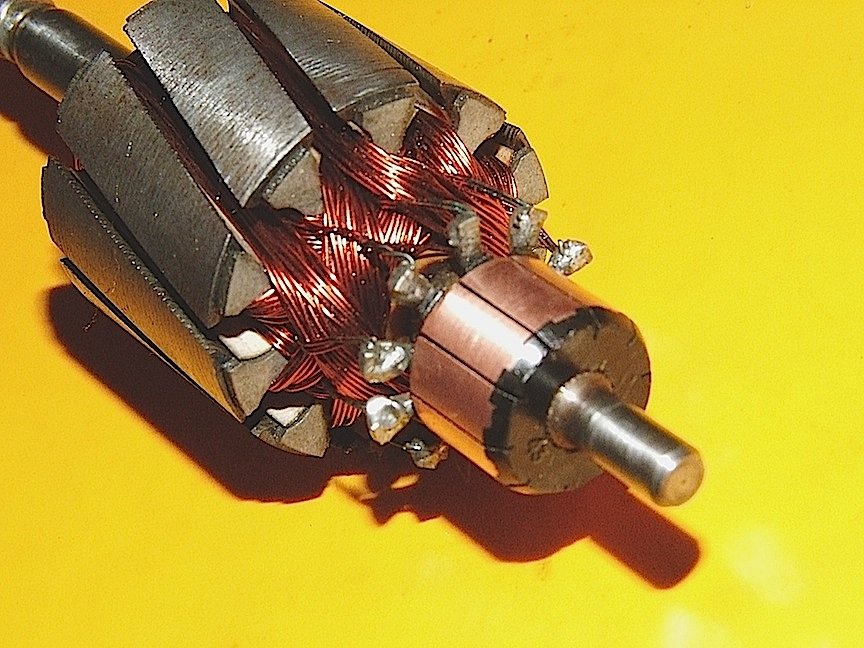
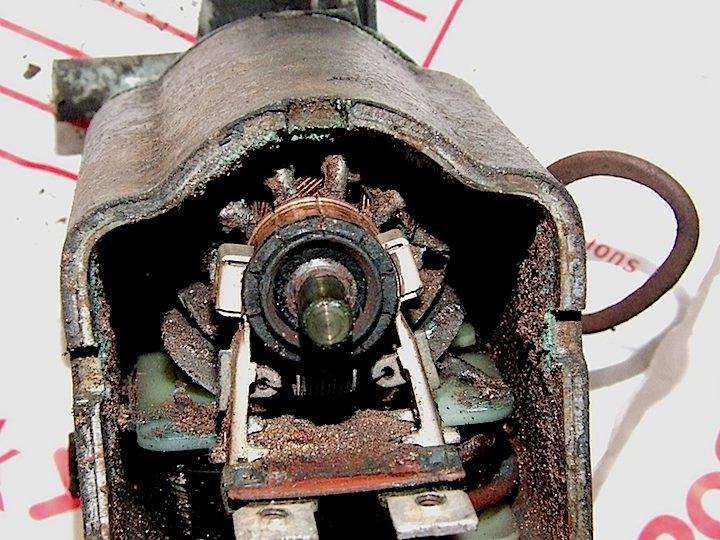

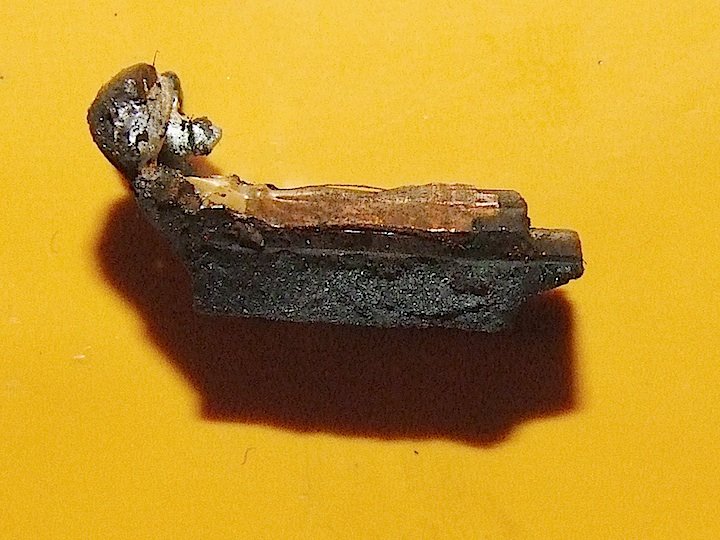
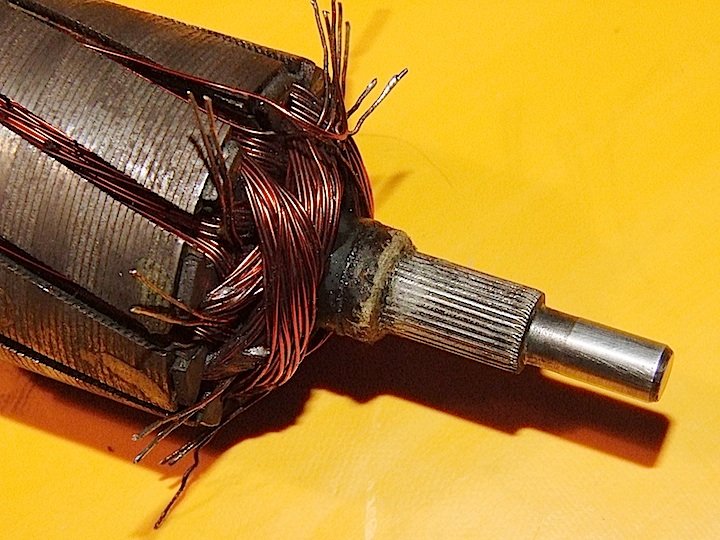
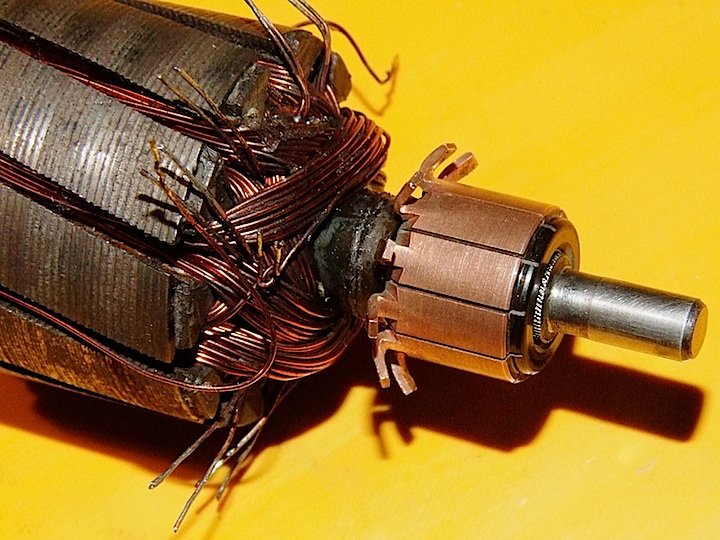
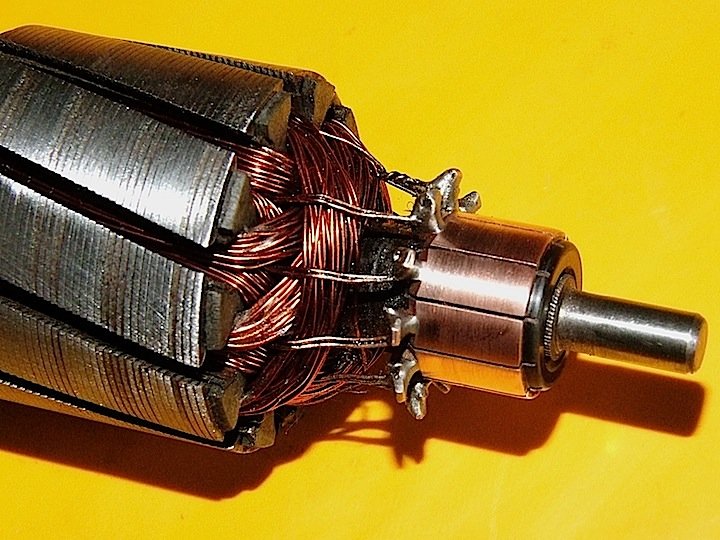
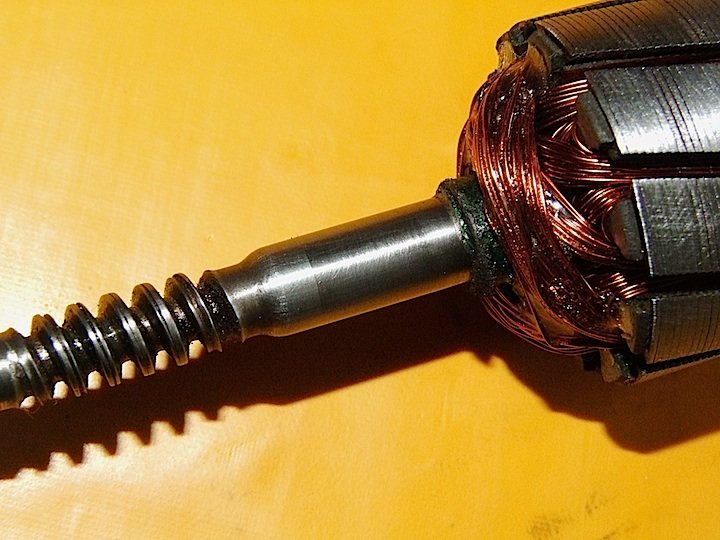
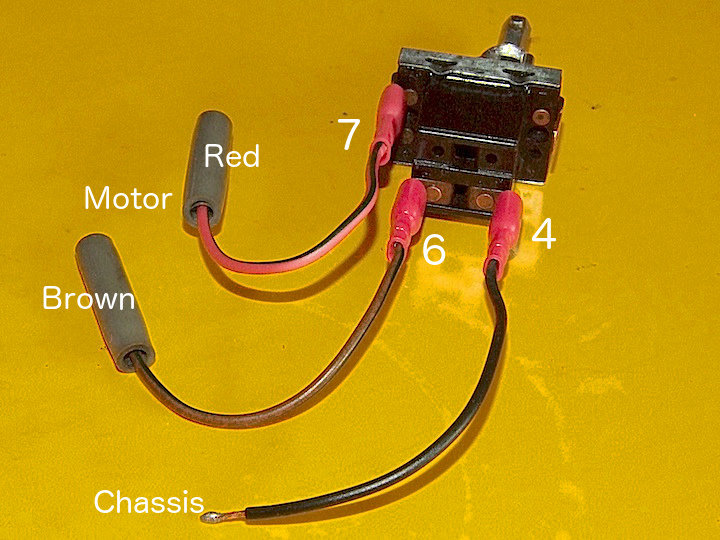
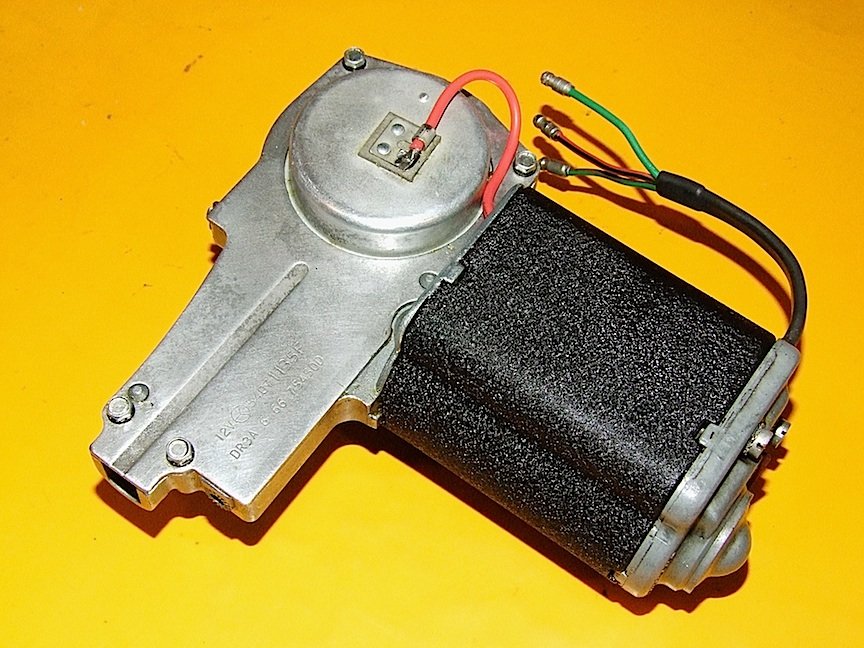

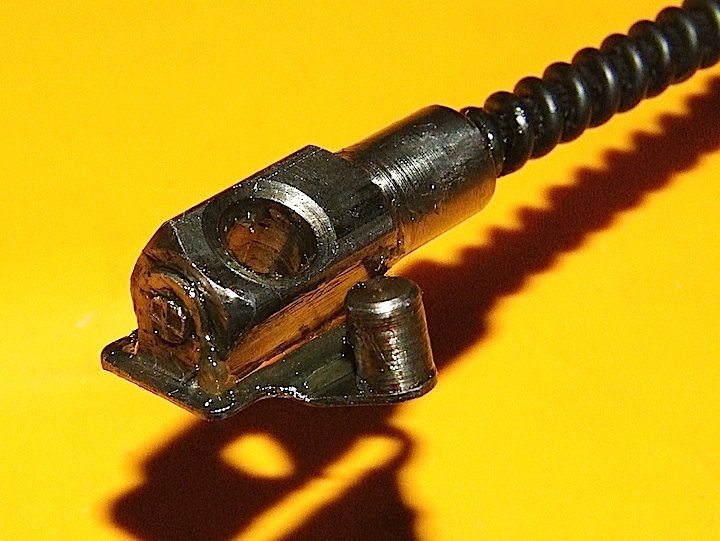
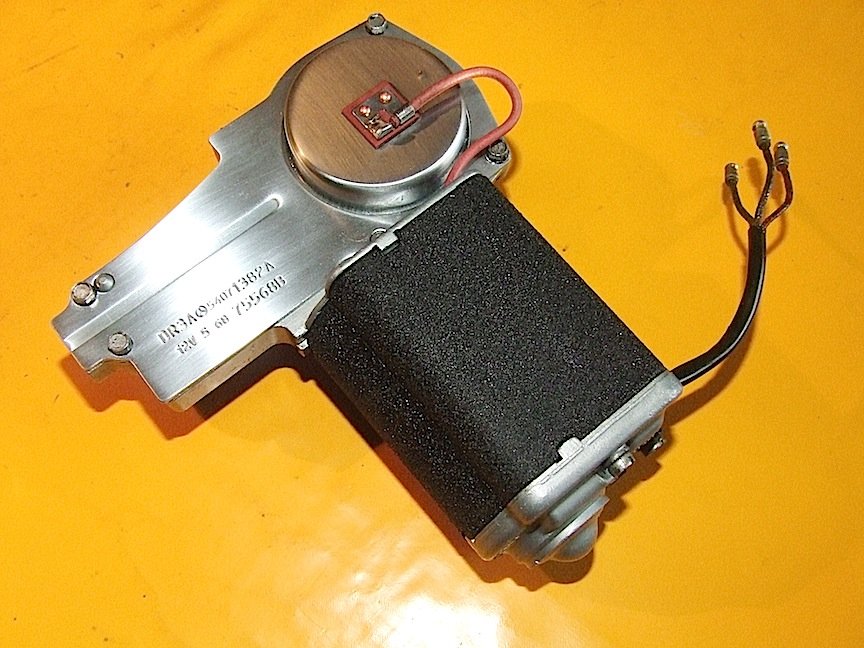
Wiper motor bracket colour
in TR4/4A Forum
Posted · Edited by AlanT
Here is one I did for a well known forumite.
It's pretty hard to get the rubbers in. Too hard to hold the plate with one hand. I put it in the wood jaws of a Workmate.
I squashed the rubber into a flattened figure-of-8 shape by clamping in the tip of the jaws of a Mole-wrench. DONT use any lubricant, you won't hold on to it.
Now you can engage it in the plate and push hard and gradually work the Mole-wrench to expose more rubber and the keep pushing. This isnot easy and requires strength and control in you hands.
I used VHT wrinkle paint because after ovening this withstands rough handling.
Not too hard to find good NOS rubbers for this job.